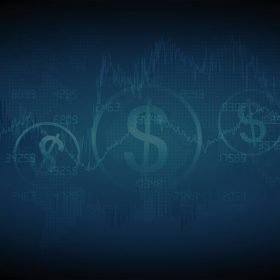Could Inflation Return?
By Terry Savage on January 11, 2021
Inflation is a distant memory to a generation of investors and consumers. But 40 years ago, as the Fed created money to offset government spending on the Great Society and on rising oil prices, there was an overwhelming fear that the dollar was losing buying power at an accelerating rate. That’s the perfect definition of inflation.
Prices were rising and the value of saved money was dropping. So there was a corresponding rush into other assets – ranging from gold and silver to soybeans and farmland.
All that seems like ancient history now. But in an era when governments and central banks are piling on new debt, it’s wise to consider the possibility.
Right now, despite all the new money creation, inflation remains tame. The consumer price index shows only a 1.2% annual rate of inflation in the United States. And the Fed is hoping inflation will move higher to at least 2%.
Fear of inflation typically pushes interest rates higher. But the Fed has promised to keep short-term rates artificially low. Can they do that? While the Fed has great control over short-term rates, buying and selling securities for its own portfolio, it has less control over longer term interest rates.
Could Interest Rates Go Higher?
Two factors could create higher long-term rates in the freely traded bond market, where the Fed has less influence. First, the return of economic growth creates increased demand for capital, pushing long term rates up. Or, if the world’s “smart money” decides that the United States has created so much new debt that it’s risky to buy American long term bonds at low rates. Then they will demand higher rates to offset feared inflation.
Right now the interest rate market is balanced between fear of economic lockdowns because of Covid and hopes for economic growth coming from the stimulus and the beneficial effects of the vaccine.
To see what’s happening to interest rates, just watch the benchmark 10-year U. S. Treasury note. It traded at a yield of only 0.54 during the worst of the pandemic, is now approaching 1 percent. The Fed has less control over these longer term rates, which are decided by the bond market.
The yield on 10 year Treasuries has two immediate personal finance impacts:
Mortgage Rates In the United States, rates for 30-year fixed rate mortgages are set based on the 10-year Treasury note rate. And those rates have been rising in recent weeks, in anticipation of economic growth as the vaccine prospects have become a reality. When 10-year rates pop over 1%, you will see mortgage rates climb over 3% again.
As I write this column, the average rate on a 30-year fixed rate mortgage for those with good credit is 2.90%. Rates on 15- year mortgages are at least a quarter percent lower. This is an unusual opportunity to refinance your mortgage, locking in low rates.
I have always suggested that people try to pay off a mortgage before retirement. But for those who doubt they will ever pay off their mortgage, the next best thing is to lock in today’s historic low rates.
Bond Funds Every saver knows that rates on deposits are lower than even our historically low inflation rate. The Fed is punishing savers. You likely earn less than a quarter of one percent on a CD, while inflation is just over 1 percent.
Those low rates have encouraged many savers to seek higher yields in bonds, especially riskier bonds. But there’s a hidden trap in those risky bonds. It’s not only the risk of default, for which you are not being compensated enough these days. It’s interest rate risk: If interest rates rise, you will be holding long term bonds at very low rates – or selling those bonds at a loss because no one else wants them either! Rising rates mean falling bond prices.
Today’s low interest rates are both an opportunity and a risk. Be sure you know which is which. And that’s The Savage Truth!




